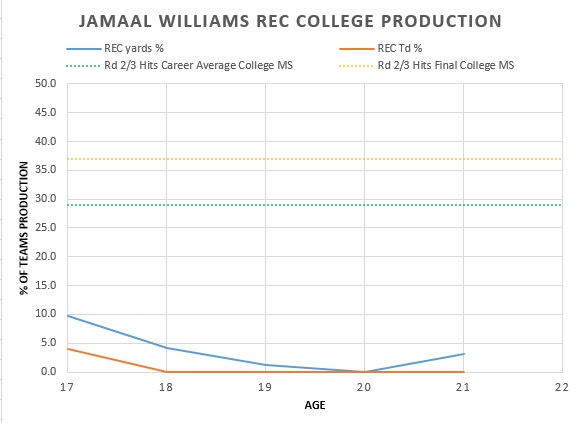Summer Sleeper: Green Bay Packers
In our annual 32-part Summer Sleeper series, DLF scribes identify a lightly-touted player on each NFL roster who may be worthy of your consideration. Our subjects all have varying levels of “sleeperness,” but each merits a bit of in-depth discussion here in the Premium Content section.
To help everybody along, we are going to be categorizing our sleepers under one of three headings:
Super Deep Sleepers – Players who aren’t roster-worthy in 12-team leagues, but are still worth keeping an eye on.
Deep Sleepers – An end of the roster player who is more often than not on the waiver wire in 12-team leagues.
Sleeper – A likely rostered player who makes for a good trade target. Their startup ADP puts them out of the top-175 or so.
Because we aren’t going give you the likes of mainstream sleepers, most of these players will undoubtedly fizzle. All we are asking is for you to keep an open mind and perhaps be willing to make room for one of these players on your bench. You never know when the next Adam Thielen is going to spring up. Feel free to add your own thoughts about our choice for the designated sleeper, or nominate one of your own in the comments below.
The Green Bay Packers had a good year in 2016. But after losing Eddie Lacy five games into the season the team had to rely on converted wide receiver Ty Montgomery at running back. Short passes became the majority of the running game. The whole team’s reliance on passing production shows up in the red zone volume, and efficiency.

Everyone over-performed in Expected Points per Target in the red zone. So a big question this off-season has been which of the Packers newly drafted rookies will play behind their freshly minted running back. Early predictions have Jamaal Williams as the player to roster. However while everybody loses their mind over Kenny Golladay, it’s important to remember that the preseason can mislead us.
[am4show have=’g1;’ guest_error=’sub_message’ user_error=’sub_message’ ]
Aaron Jones, RB
Category: Super Deep Sleeper
I am convinced Ty Montgomery will be the lead running back in 2017. Pass protection is a learned skill most players have to improve once at the NFL level. Since Montgomery has been learning the position from scratch I’m not surprised he struggled in the nuances of the role. I’m not going to judge him on his 2016 performance without a friendly cushion of “he can improve.” In the meantime, who is the better backup for fantasy?
If you know anything about Jamaal Williams, it’s likely that he is better in pass protection. I find that idea questionably unquestioned, but I’m going to accept it to make things simple. The benefit of being #good at pass protection is that a player can be on the field and that means opportunity. So let’s consider what Williams might be able to do with his opportunity compared to Aaron Jones.

Jamaal Williams has good college rushing production in his favor. He started playing college football at 17 years old. Here’s an article from the time to prove it. He accounted for over 50% of his teams rushing touchdowns, AT 17 YEARS OLD!

Table from Sports Reference.
He missed a lot of his age 19 season due to a knee injury and multiple code violations – including underage drinking – and was still the team’s lead rusher with 518 yards. He sat out his age 20 season for personal reasons, but intended to come back for his senior year and did so in 2016. Returning to the team, he continued to have strong production, with almost as high market share, and higher counting stats at age 21.

Williams was the reason for his own high numbers, not the team or scheme. That he was out producing older players with more experience at a younger age means he is a skilled runner. But even as the “best pass blocking running back on the Green Bay Packers,” he won’t catch passes. Running backs rarely, if ever, develop this part of their game. If you don’t come to the NFL with it already, you don’t find it later. Pass blocking, yes, pass catching, no.
Despite the regular off-season story of how many passes Adrian Peterson is going to catch, it never happens. LaDainian Tomlinson did develop the skill in the NFL even though he caught hardly any passes in college. But Tomlinson did a lot of things few others can do. My point is, it is rare for a running back to become a consistent pass catcher if they didn’t do it in college.

*I’ve included the average career and final MS for wide receivers who hit in fantasy after being drafted in the second or third round of the NFL draft. Just for fun.
This makes his upside a one-dimensional grinder. But what has me worried more is that talent evaluators continually use words and phrases like “uncreative,” “balance issues” and “hit or miss on holes.” They also say positive things like “grinder,” “no nonsense,” and “powerful,” but his athletic testing suggests that power won’t look as good against NFL level competition (18th percentile Burst score.)
There are some that see better potential in his tape but if we are going to admit to subjectivity on tape then we also have to question his pass-blocking evaluation. None of these players were in the same situation or up against the same competition. So my process is to trust the things that have been the most predictive like their share of production and athletic measurements. In short, he profiles as a (lot) less athletic version of Robert Turbin, or a slightly more athletic version of Robert Kelley.
The chances Jamaal Williams can reach these heights and become a productive fantasy running back are low based on his athleticism. True, outliers like Kelley, exists. But you can burn through roster spots if you bet on them too often. I’d rather bet on the upside of Aaron Jones with an even later round pick.

It’s not 50% of a team’s rushing touchdowns at 17, but it is 47.7% at the age 19, and I’ll take that. In fact, I’m underplaying his production. Nick Frost of Rotoviz described Jones as the most productive running back in the 2017 class. The reasons why have a lot to do with his all-around skill set.

Jones managed a 25% share of his teams receiving touchdowns at age 19. The same year he had 47.9% of his teams rushing yards. That’s incredible sophomore production in all areas of the field.

Table from Sports Reference.
In his final season, he totaled 2006 total yards from scrimmage and 20 touchdowns in all. Just like Williams, the counting numbers are inflated because he is a talented running back going up against lower level defenses. (Jones managed a 40+ yard run in eight different games in 2016 and also finished second in the vertical jump, third in the broad jump and second in the three cone at the NFL combine.) Market share proves they are greater than the sum of their situations. The other main difference for me is that Jones displays NFL level athleticism for the position (and catches passes.)

Jones is slightly shorter (5’9″, 208lbs) than Jamaal Williams (6’0”, 212 lbs) but there are examples of successful NFL running backs at his size. This hurts his Height-Adjusted Speed Score (96.2, 44th percentile) but he is faster with a 4.56 40-time, than Williams who ran a 4.59. Despite being three inches taller, Williams still has a worse Height-Adjusted Speed Score (95.5, 42nd percentile.) More importantly, Jones’ Burst metric (127.3, 87th percentile) dominates Williams (112.5, 18th percentile) and tells us he is a more explosive player with a better chance of transferring his skill to the NFL level.
He makes a better comparable to Ty Montgomery with the exception that Jones was, of course, more productive in the running game in college. But, because of his excellent receiving production, he also has a comparable college target share (in the 90th percentile) to Montgomery’s (in the 99th percentile) and he played wide receiver in college!
There is a lot Jones needs to develop to succeed in the NFL. But everything he needs to learn is learnable. Jamaal Williams can’t become more athletic and the history of the position suggests he won’t develop into a pass catcher.
I don’t project either to see enough snaps or production to be fantasy relevant in 2017. But, if I’m rostering a player behind Montgomery, it’s Aaron Jones. Right now, camp reports are making it clear Jones is slipping on the depth chart and is not developing as fast as we may hope. So take I’m not suggesting a huge investment. In the end, most rookies don’t work out. But I’d rather miss on one that could be special, then burn a roster spot on one who is more likely to see the field, but less likely to produce fantasy points at the NFL level.
[/am4show]
- Peter Howard: Dynasty Fantasy Football Superflex Rankings Explained - March 6, 2024
- Dynasty Target and Regression Trends: Week 15 - December 23, 2023
- Dynasty Target and Regression Trends: Week 14 - December 16, 2023


































































